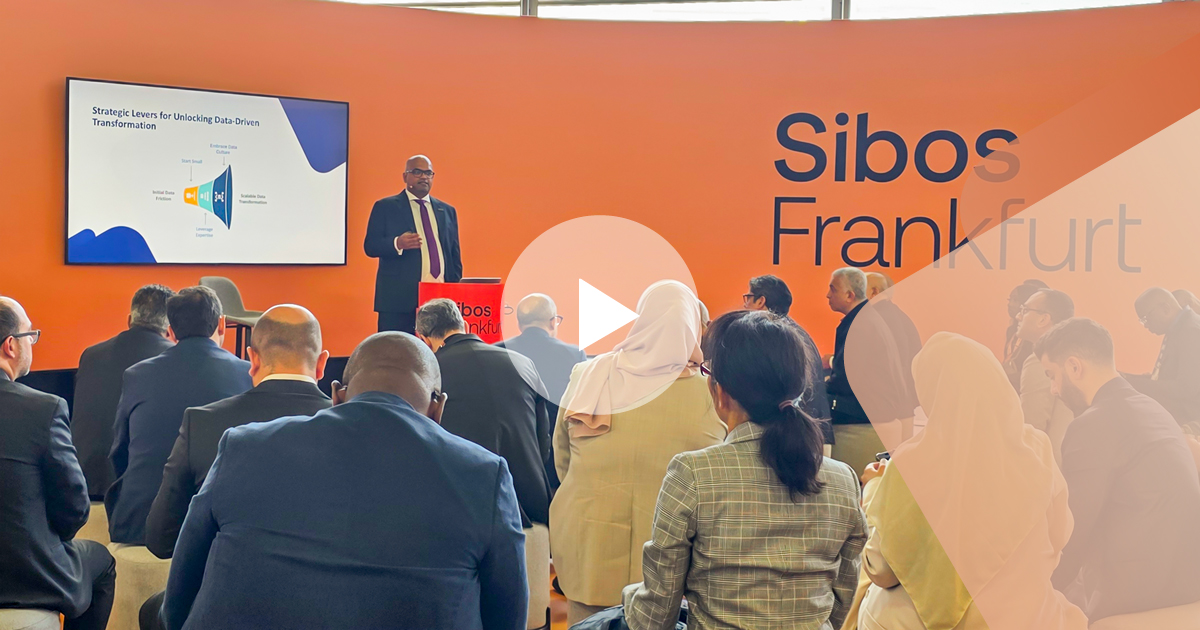
December 31, 2023
The Riveting Financial Trends Set to Dominate 2024

The anticipated financial solution trends of 2024 are poised to transcend the boundaries of the banking realm, heralding a transformative impact with the potential to redefine the entire financial landscape. The following projections of financial solutions are developed based on three foundational pillars:
- Progression of Existing Technologies
Financial solutions trends under this pillar follow the advancements of already established technologies that took the world by storm in the past few years. Some of the technologies expected to further develop are:- Instant Payments
Almost every country worldwide is either currently operating, actively implementing, or in the process of executing instant payment systems at the domestic level. This development has prompted locally regulated financial institutions and banks to establish specialized participant systems. These systems provide connectivity to the central instant payments system, ensuring compliance with regulatory Service Level Agreements (SLAs) for handling domestically initiated payments.
In a parallel trend observed in 2023, various correspondent banks globally are earnestly exploring the necessity of enabling instant payment settlements for cross-border transactions. This involves leveraging existing nostro/vostro accounts with different currencies, taking into consideration the dynamic nature of currency exchange rates during transactions.
Payment hub systems play a key role in intelligently facilitating cross-border instant payments through the integration with both upcoming traditional and blockchain-based solutions.
- Central Bank Digital Currencies (CBDCs)
Nearly eight years have passed since the initial exploration of converting a jurisdiction’s local currency into a fully digital form using Distributed Ledger Technology (DLT) and Blockchain technologies in 2016. Over this period, numerous experiments, pilots, and live implementations have been conducted.
The trajectory of CBDC adoption has experienced fluctuations since its inception, displaying a pattern of both advancement and retraction. However, as of 2023, the necessity for CBDCs has become increasingly evident to various regulators, signaling a potential surge in global implementations. Central banks and regulators may collaborate with technical partners to conduct experiments and pilots, and in some cases, seek proposals for the development of tangible CBDC solutions.
The ongoing evolution of CBDCs will continue to emphasize the interconnected facets of wholesale, retail, and cross-border transactions.
- Decentralized Finance (DeFi)
A dynamic and evolving trend in the financial landscape is DeFi, short for decentralized finance. This trend acts as an umbrella term encompassing multiple potential methods such as crowdfunding, crowdlending, social media financing, peer-to-peer financial engagements, and others.
This developing industry constitutes an entire domain with a wide spectrum of cutting-edge advancements, requiring sets of solutions, applications, and regulatory frameworks.
Anticipated to gain further prominence in 2024, we foresee DeFi evolving into a more refined and crystallized form by the fourth quarter of the year.
- Open Banking
Over fifty countries have already set their open banking standard either by adapting to the revised Payment Services Directive (PSD2) legislation or developing comparable locally-driven regulatory frameworks.
It is expected that demands for open banking applications and software solutions will evolve during 2024 with a stronger emphasis on Application Programming Interface (API) development utilizing existing core banking systems and middleware.
- NeoBanking
The advent of open banking has given rise to a novel breed of financial institutions, commonly referred to as digital-first banks or neobanks.
The International Monetary Fund (IMF) predicts an exponential surge in neobanking, with numerous digital-first banks set to launch in 2024 either established by existing financial firms or by innovative firms arising from the fintech sector [1].
The expansion of neobanking is resulting in an accelerated development in the financial industry. This development underscores the imperative for a transition towards cloud-native, API-first, and autonomous financial services, incorporating features such as electronic Know Your Customer (eKYC) and fully automated customer onboarding.
- Instant Payments
- Invention of Novel Technologies
The latest trends in the financial industry leverage new cutting-edge technologies, which fall under the second pillar. Among these emerging technologies that will be emphasized in 2024 are:
- Artificial Intelligence and Machine Learning (AI/ML)
AI/ML will remain a topic of interest and maintain its popularity, capturing the attention of financial institutions, particularly regarding online detection of potential security threats and fraudulent transactions.
Transactional-level fraud detection is yet another aspect of an AI/ML application that is expected to gain attraction. Furthermore, there will be a growing inclination towards the incorporation of AI/ML in cybersecurity solutions, extending beyond traditional hardware appliances for intrusion prevention and detection.
- Distributed Ledger Technology and Blockchain (DLT/BC)
Many financial institutions and regulators have conducted various experiments exploring the potential applications of DLT/BC technologies, with a particular emphasis on facilitating cross-border real-time payments and settlement.
Nevertheless, concerns from these experiments will surface in 2024 determining the future continuation of this exploration. Although these experiments might not lead to the widespread adoption of solutions based on DLT/BC by commercial financial institutions, they can influence the narrative related to regulators and their initiatives in building CBDC solutions.
- Augmented and Virtual Reality
A burgeoning trend, gaining momentum since the public introduction of metaverses, involves the practical integration of virtual and augmented reality in domains like online purchases. There is a likelihood that augmented reality will further permeate the financial industry, paving the way for remote communication between end consumers and banking services through augmented virtual reality technologies.
Although the conceptualization of this use case is not fully defined, the anticipation for it is high, fueled by the eligibility of Gen-Z for banking services and the revolutionary advancements in augmented and virtual reality technologies.
- Artificial Intelligence and Machine Learning (AI/ML)
- Migration to Cloud Infrastructure
Operational platforms continue to make a strategic shift from on-premises to public clouds due to security and privacy demands emphasized by local regulators and financial institutions alike.
The selection of a specific public cloud provider will depend on its availability within a country's geographical bounds. Leading cloud infrastructure providers to accelerate their operations in order to expand their presence in different geographies, with some seeking regulatory approval to incentivize banks and financial institutions to adopt their services.
Furthermore, we will be observing a significant surge as reputable enterprise-level financial institutions take the lead in migrating their existing solutions, opting to operate over private virtual clouds, and utilizing one or more cloud providers operating within their respective geographical regions. This strategic move aligns with the evolving landscape, ensuring enhanced security, regulatory compliance, and geographical accessibility.
References:
- International Monetary Fund, Global Financial Stability Report. 2022



